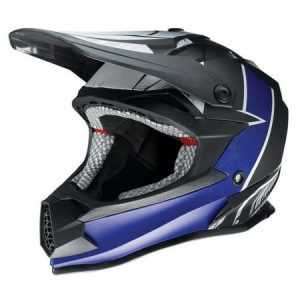Your motorcycle helmet visor is your window to the world. It shields your eyes from dust, debris, insects, and the occasional rogue raindrop, ensuring a safe and comfortable ride. But a dirty visor can quickly become a safety hazard, compromising your vision and hindering your ability to react to potential hazards on the road. This guide will equip you with the knowledge and techniques to keep your motorcycle helmet visor sparkling clean, guaranteeing optimal visibility for every ride.
Understanding Your Visor’s Materials
Before diving into cleaning techniques, it’s crucial to understand the materials your visor is made from. Most modern motorcycle helmets come equipped with visors constructed from polycarbonate plastic, known for its strength, impact resistance, and optical clarity. Some high-end helmets might even feature visors with anti-scratch or anti-fog coatings for enhanced durability and visibility.

Understanding these materials is vital for choosing the correct cleaning methods. Harsh chemicals or abrasive cleaning tools can damage your visor’s surface, leading to scratches and reduced clarity. By following the recommended cleaning techniques, you can ensure a spotless visor without compromising its integrity.
Gathering Your Cleaning Arsenal
Effective visor cleaning doesn’t require a complicated arsenal of cleaning products. Here are the essentials you’ll need:
- Microfiber cloths: These soft, lint-free cloths are ideal for cleaning your visor without scratching the surface. Opt for microfiber cloths specifically designed for cleaning eyeglasses or electronics for optimal results.
- Warm water: Hot water can potentially warp your visor, so stick to lukewarm water for best practices.
- Mild dish soap: A gentle dish soap, like the kind you use for washing dishes, works wonders on removing dirt, grime, and even stubborn bug splatters. Opt for a fragrance-free dish soap to avoid any potential irritation to your eyes.
- Spray bottle (optional): A reusable spray bottle filled with the diluted cleaning solution can be handy for applying the cleaning solution evenly to your visor.
Avoid these cleaning products:

- Paper towels: These abrasive materials can easily scratch your visor’s surface.
- Household cleaners: Ammonia-based cleaners, window cleaners, and all-purpose cleaners can damage your visor’s coatings and compromise its clarity.
- Abrasive sponges or scouring pads: These will undoubtedly leave scratches on your visor.
The Basic Cleaning Routine
Now that you have your cleaning supplies gathered, let’s walk through a basic cleaning routine for your motorcycle helmet visor:

-
Preparation: Park your motorcycle in a shaded area to avoid direct sunlight, which can dry the cleaning solution too quickly. Remove your helmet from your head and place it on a clean, flat surface. Gently lift the visor to a fully open position.
-
Pre-Rinse: Using clean water, gently rinse away any loose dirt, dust, or debris from the visor’s surface. This helps prevent scratching the visor when you move on to the cleaning stage.
-
Cleaning Solution: Fill your spray bottle (if using) with a mixture of lukewarm water and a few drops of mild dish soap. Alternatively, you can dampen your microfiber cloth with the cleaning solution.
-
Cleaning the Visor: Gently wipe the visor’s inner and outer surfaces with the damp microfiber cloth, using a circular motion. For stubborn bug splatters or road grime, apply slightly more pressure while cleaning.
-
Rinse and Dry: Once the visor is clean, thoroughly rinse it with clean water to remove any soap residue. Finally, use a dry microfiber cloth to buff the visor dry and ensure a streak-free finish.
Pro Tip: If you’re dealing with particularly stubborn grime or insect residue, you can let the cleaning solution sit on the visor for a few minutes before wiping it clean. This allows the soap to loosen the dirt for easier removal.
Deep Cleaning for Heavily Soiled Visors
For visors excessively caked with dirt, grime, or insect residue, a slightly more intensive cleaning approach might be necessary. Here’s how to tackle a deep clean:

-
Follow steps 1 and 2 from the basic cleaning routine.
-
Soak the visor: Fill a basin with lukewarm water and add a few more drops of dish soap than usual. Submerge the visor completely in the soapy water solution and let it soak for 10-15 minutes. This soaking process helps loosen and soften stubborn dirt and grime.
-
Agitate gently (optional): If necessary, you can gently agitate the visor in the soapy water with your hand to further loosen any stuck-on debris. Avoid using any abrasive tools or scrubbing excessively.
-
Cleaning and rinsing: After soaking, remove the visor from the water and clean it thoroughly using the microfiber cloth and cleaning solution as described in the basic cleaning routine. Pay close attention to areas with heavy grime build-up.
-
Rinse and dry: Rinse the visor with clean water to remove all soap residue and then dry it completely with a clean, dry microfiber cloth.
Important Note: If your visor has an anti-fog insert (Pinlock visor), remove it before deep cleaning and clean it separately using the same cleaning solution. Consult your helmet’s manual for specific instructions on removing and reinstalling the anti-fog insert.
Maintaining Your Visor’s Clarity: Anti-Scratch and Anti-Fog Coatings
Many high-end motorcycle helmets come equipped with visors featuring anti-scratch and anti-fog coatings. These coatings enhance the visor’s durability and functionality but require specific care to maintain their effectiveness.

-
Anti-Scratch Coating: These coatings create a harder outer layer on the visor, making it more resistant to scratches from minor scuffs or debris. However, they are not invincible. Always be mindful when cleaning your visor and avoid using abrasive materials or harsh chemicals.
-
Anti-Fog Coating: This coating is hydrophilic, meaning it attracts moisture and creates a thin water layer on the visor’s inner surface. This prevents condensation and fogging up, especially in humid or cold weather conditions. Avoid touching the inner surface of the visor with your fingers as the oils from your skin can damage the anti-fog coating. Certain cleaning products can also be detrimental to the anti-fog properties. Stick to the recommended cleaning methods and avoid using harsh chemicals or ammonia-based cleaners.
If you notice a decline in the effectiveness of your anti-scratch or anti-fog coatings, consult a motorcycle helmet specialist for recommendations on potential treatments or visor replacements.
Replacing a Scratched or Damaged Visor
Even with proper care, your visor might eventually develop scratches or become damaged from road debris or a minor accident. If the scratches are minor and only on the outer surface, you might be able to buff them out using a special polishing compound designed for polycarbonate visors. However, for deeper scratches or any significant damage, replacing the visor is the safest option.
When replacing your visor, ensure you purchase a visor specifically designed for your motorcycle helmet model. Using an incompatible visor can compromise the helmet’s safety features and proper fit.
The Importance of a Clean Visor: Safety and Enjoyment
Maintaining a clean visor is not just about aesthetics; it’s crucial for ensuring optimal safety and riding enjoyment. A dirty or scratched visor can significantly hinder your vision, reducing your reaction time and potentially leading to dangerous situations. By following the cleaning techniques outlined in this guide, you can keep your visor sparkling clean and ensure a clear view of the road ahead, maximizing your safety and enhancing your riding experience.
Keeping Your Ride Crystal Clear: Additional Tips and Tricks
Here are some additional tips to keep your motorcycle helmet visor clean and ensure optimal visibility:
-
Carry a microfiber cloth: Stash a microfiber cloth in your motorcycle jacket or tank bag. This allows you to give your visor a quick wipe down on the go if you encounter dust, bugs, or unexpected splashes.
-
Clean your visor after every ride: Making cleaning your visor a part of your post-ride routine helps prevent dirt and grime build-up and ensures a clear view for your next adventure.
-
Store your helmet properly: When not in use, store your helmet in a cool, dry place away from direct sunlight. This helps prevent the visor’s material from degrading and keeps it clean.
-
Invest in a visor cleaning kit: Certain manufacturers offer visor cleaning kits that include specialized cleaning solutions and microfiber cloths specifically designed for motorcycle helmet visors. These kits can be a convenient option for keeping your visor clean and protected.
By following these tips and incorporating a regular cleaning routine into your motorcycle maintenance regimen, you can ensure a clear view, maximize safety, and enjoy every ride on the open road
